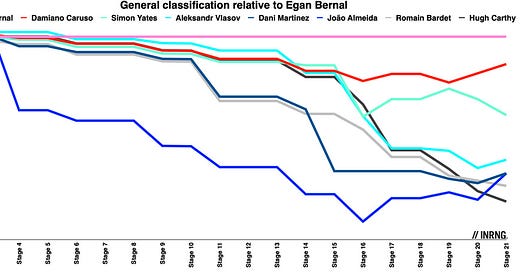Where the Giro Was Won & Ineos Struggles at the Dauphine Time Trial
Breaking down where the Giro's winning gaps came from & where Ineos' goes after their Dauphine struggles
Since a few days have passed since Egan Bernal’s win at the recent Giro d’Italia, I’ve had some time to look back through the race and examine where the race was actually won. On a surface level, this is, of course, an absurd exercise, since during a 21-stage race, the eventual winner wins the race throughout every one of the 21 stages. The race isn’t ‘…
Keep reading with a 7-day free trial
Subscribe to Beyond the Peloton to keep reading this post and get 7 days of free access to the full post archives.



